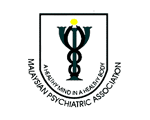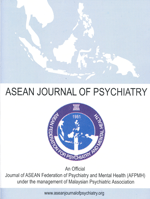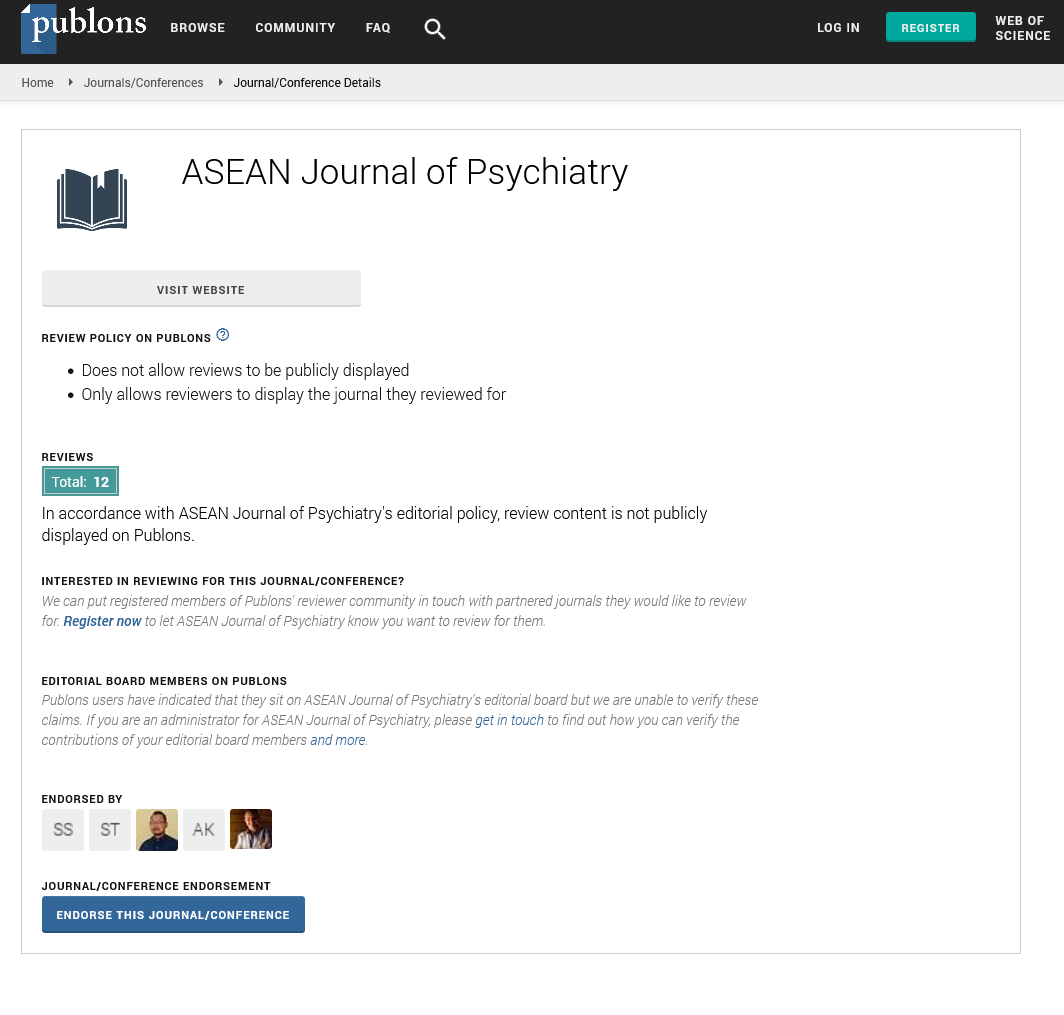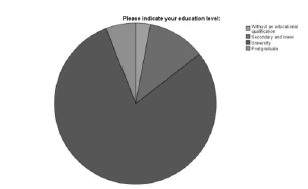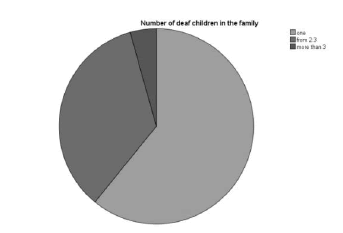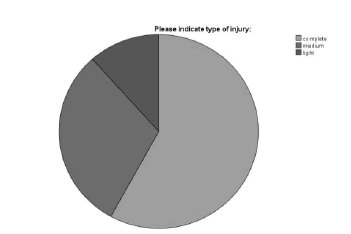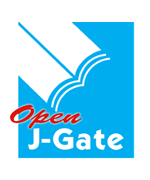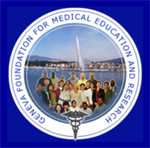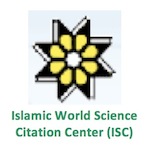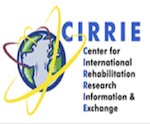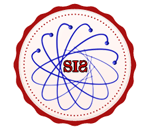Introduction
Interest in the sign language of the deaf is intensified after it has become a recognized language in many countries of the world, in schools and institutes. Sign language is the natural language and the deaf's primary language, because of its ability to express easily the needs of the deaf. Sign language has special rules for sign syntax and sign language is not standardized across the world. Deaf groups in every country have their own sign language. The Deaf category is a heterogeneous class, in terms of characteristics, needs and capabilities, requiring many methods of communication, whether verbal or manual, to suit each deaf according to his/her needs and capabilities, the family environment to which he/she belongs, and the educational option that corresponds to his communication needs [1]. Also, the effective communication facilitates integration Deaf people in the society in which he lives and help them to learn life skills, and skills in the field of social development, and therefore facilitate their full participation in education as an equal basis with others [2]. Most countries take appropriate measures to facilitate learning sign language and encourage the linguistic identity of the deaf community. In addition, to ensure education for the deaf or deaf blind, especially their children, in the most appropriate languages and environments that suite them in order to optimize academic and social development [3].
Statement of the problem
Deaf children of hearing parents arrive at school with no fluent in the Saudi sign language, also they do not have any appropriate language skills. Consequently, the Deaf student faces a difficult in communicate and learn, also the teacher faces difficulties in teaching these children. Where the teacher makes a great effort between teaching them sign language and academic content [4]. Mentioned that deaf children of hearing parents reach between 90-95% which this may result in poor sign language due to the lack of awareness parents of the importance of the critical period of language development.
Consequently, the importance of this study emerged by making basic references and some terms that help hearing parents to communicate in sign language with their Deaf children to develop their linguistic wealth and the development of their social growth as well. On the other hand, assisting early intervention centers' specialists and who are interested in learning basic signs for dealing with Deaf children.
Questions of the Study
This study tried to answer the following questions
1. What are the most common sign language vocabulary used among Deaf babies from the point of view of deaf mothers?
2. What are the most common simple reference sentences for Deaf babies from the point of view of deaf mothers?
3. Are there statistically significant differences in determining the most important sign language vocabulary used among Deaf babies due to the variable qualification, number of deaf children, hearing loos degree from the perspective of deaf mothers?
The aims of the study
The present study aims knowing the most common sign language vocabulary used among Deaf babies from the point of view of deaf mothers. Also, knowing the most common simple reference sentences for deaf children from the perspective of deaf mothers. And detecting the presence of statistically significant differences in determining the most important sign language vocabulary used among Deaf babies due to the variable qualification, number of deaf children, hearing loos degree from the point of view of deaf mothers?
The importance of the Study
The importance of the study is summarized as follows
1. This research enriches special education libraries.
2. Helping hearing parents.
3. Benefiting from the results of the current research, by specialists in the field of special education.
4. It works to communicate between the deaf child and society, and the transfer of feelings between them.
5. It helps to express the different needs of the deaf child.
The Limits of the Study
1. Objective limits: The research was limited to knowing the most important sign language vocabulary used among Deaf babies from the perspective of deaf mothers.
2. Spatial limits: This research was applied Kingdom of Saudi Arabia
3. Time limits: This research was applied on 2022.
4. Human limits: The research included a sample of Deaf mothers.
Literature
The earliest attempts of the deaf to develop communication skills date back to 1555 by the Spanish (Pedro Ponce), who began teaching the children of the noble families, followed by another Spanish in 1620, where he developed the first documented dictionary in sign language. The French (Libyan Charlo) founded the first school in Paris in 1755, to educate the deaf. In the 19th century the sign language system was strongly criticized by oral system advocates. This method was banned at the Milan conference held in the Italian in 1880, and the oral method was imposed, but the strength and importance of sign language made it impose itself again. Despite this controversy, sign language continued to develop and took its place in the deaf community until the World Federation for the deaf conference, held in Tokyo, Japan in 1991, was adopted sign language as the mother tongue for the deaf [5].
Sign language properties
Sign language is a visual language, which use the visual-manual modality to convey meaning. Attention and communication in sign language are very important to achieving communication with others, and this is a trully challenge, where everyone interested in dealing with Deaf people, should learn sign language. Personnel in special groups and sign language education find that Deaf people are pleased when others learn their language. Sign language must be available to taught [6]. Deaf people are not limited to using their hands to point but rather they use their bodies and faces. When they want to give a kind of rhythm to their signs, they use their body movements. Deaf people move the head to express negation and proof, and use the facial expressions to indicate feelings of happiness, sadness and fear as well [7].
Some signs that the deaf uses are mainly based on simulation. For example, a sign walk comes from the index finger and the middle finger pointing down and simulating the legs, and then moving the two fingers simulating how people walk [8]. From the foregoing it is clear that the sign language is considered as the visual language for communication among Deaf people. Where the hands draw to form the thing to be clarified plus using facial expression and body movements, therefore, see the language but not hear it.
Saudi Sign Language
Saudi Arabia was one of the first countries that rushed to establish the Arab Federation for Public Authorities in the Care of Deaf in 1972, supported it financially and morally. Also, Saudi Arabia participated in its projects and activities, and achieved great success in establishing Deaf weeks, especially the 29th Deaf Week, during the period from 10- April 12, 2004, under the slogan Sign language Dictionary and Communicating Deaf people with Society [9]. It also clearly showed the role played by the General Secretariat by sending sign language interpreters to participate in the unified Arabic sign language in Bahrain, Egypt, Tunisie and Qatar [10]. Deaf clubs in the Kingdom have preserved the identity of the deaf, developed their language, brought out their culture to the hearing community, and opened the way for deaf athletes to practice their own hobbies and sports activities. This has resulted in widespread dissemination of the deaf culture and their sign language in Saudi hearing society [11]. Deaf societies in Saudi Arabia have also played a powerful role in compiling and documenting local sign language in dictionaries.
Dictionaries of sign language in Saudi Arabia
The Saudi Association for Hearing Disability has issued the "Saudi Sign language Standard Dictionary" and the training of parents of deaf and specialists. In the Arab countries, there are two unified Sign Language Vocabulary dictionaries. The first one includes the alphabet and numbers and more than 2700 sign. It's considered one of the largest sign language dictionaries issued to Arabs to date. The second one includes alphabet and numbers and 1500 new sign. Geographical dictionary of the world’s names in sign language, includes almost all the world countries which were formed by their own sign language. Religious, Education and Medical Sign Language Vocabulary (Saudi), they include the alphabet and numbers. These dictionaries are issued in several forms, including printed paper copies, digital copies for online trading, general negotiable copies, mini digital copies for trading on smartphones, flexible and smart interactive versions that help in education and training.
Related Studies
Conducted a study aimed at knowledge the effects of sign language barriers among Deaf learners in special schools for the Deaf in the Motheo District in the Free State province of South Africa. Semi-structured focus group interviews were conducted with 7 teachers and 10 Grade 8 students who used sign language as their first language. The qualitative research approach was employed, themes identified and students were observed in their natural classroom environment. The results show a lack of in-service training in South African Sign Language for teachers. It was found that students acquired language at school rather than in the home environment. It also showed that the lack of physical resources were responsible for the learners' poor performance.
In the same context, conducted a study aimed at, knowing the necessary competencies, for sign language interpreters, from the point of view of deaf and translators, in the Kingdom of Saudi Arabia, which must be taken into account when registering, training, classification, and employing them, and the study used the descriptive analytical approach, The study tool consisted of (45) words, distributed on (3) axes, and the study sample consisted of (531) deaf and translator, of whom (398) deaf, in women's clubs and cultural centers, in Riyadh, Jeddah, and Dammam, in addition to (133) Translator, in the Saudi Committee for Sign Language Experts and Translators for the Deaf, in the Kingdom of Saudi Arabia, and the study found the most necessary competencies for sign language interpreters in the Kingdom of Saudi Arabia, from the point of view of the deaf and translators, as follows: First: personal competencies, included (12) Adequacy of the most prominent of them: to be self-confident; Time management ability. Second: Professional competencies, which included (20) sufficiency, the most prominent of which are: the ability to continuously develop and refer to himself; To abide by the ethics of the profession such as (complete confidentiality, preserving the secrets of the deaf, and not disclosing it). Third: cognitive competencies, which included (13) sufficiency, the most important of which is that he is familiar with the rules and principles of sign language; To be familiar with the standard Arabic reference dictionary.
Conducted a study, aimed at analyzing the content of the first and second Arab reference deaf dictionary for the morphological system (morphological), in the Arabic sign language for the deaf, and the study concluded that there is a morphological language system (morphological), in the Arabic sign language for the deaf, and The most prominent results of the study were that the use of the finger (index finger) appears clearly in the building from the names (the pronouns of the speaker, the pronouns of the addressee, the pronouns of the absent), and the results of the study also indicated that the metaphor exists as a morphological system (in morphological), in some references from languages The global sign language, and during the communication process, in the Arabic sign language for the deaf, as the study results indicated that there is a merging of the Arab sign numbers for the deaf, as a morphological system (morphological), in Gregorian months, the number of weeks, months, meters, etc., and the study recommended more Analytical studies of linguistic systems in Arabic sign language, such as the semantics system, the phonetic system, and the social linguistic system.
Conducted a study aimed at preparing an educational curriculum by using sign language, as well as preparing an ambitious level meter for people with special needs, and to find out the effect of the educational curriculum, using descriptive sign language, to teach some basic skills, from the difference games for students of the Hope Institute (Deaf school) for ages 13-15 years. The research used the quasi-experimental approach, and the research community consisted of 97 students of the Hope Institute for the Deaf students. The researcher chose (10) Deaf students to apply the educational curriculum. The study found that the curriculum prepared in the descriptive sign language has a positive impact on the learning of students at the Hope Institute for the Deaf students, for the skills under discussion, and the curriculum prepared in the sign language has a positive effect on the level of aspiration of Deaf students.
Study Methodology and Procedures
Study approach
The current study followed the descriptive analytical approach. The descriptive approach is concerned with collecting data and facts, classifying and classifying them, in addition to analyzing them. Adequate, thorough, in-depth analysis, but also includes a degree of interpretation of these results. Therefore, measurement, classification, and interpretation methods are used to extract meaningful conclusions, then reach generalizations Concerning the phenomenon being studied.
Participants
The study population consisted Deaf mothers of Deaf children in the cities of the Western Region (Jeddah - Makkah - Madinah) for the year 2022. The researcher choose 70 Deaf mothers of Deaf children as a random sample to represent the field study community.
Study tool
After reviewing the literature and previous studies related to the subject of the study, the researcher designed a questionnaire addressed to Deaf mothers cases in the cities of the western region (Jeddah - Makkah - Madinah) for the year 2022 sample study.
Study procedures
In compliance with the study limits, and to answer its questions, the researcher followed the following steps:
1. Many previous studies and research in this field, whether Arab or foreign, have been reviewed.
2. The study instrument was identified, prepared and prepared, which is the questionnaire.
3. An interview was conducted with 3 mothers of deaf children, who suggested and agreed that these references are the first to be used with their deaf children.
4. The study tool was applied to a survey sample of 10 single mothers of deaf cases in the cities of the Western Region (Jeddah - Makkah - Madinah) for the year 2022 in order to verify the validity and reliability of the current study tool.
5. The study sample was randomly chosen from the mothers of deafness children cases in the cities of the western region (Jeddah - Makkah - Madinah).
6. The researcher distributed an electronic questionnaire to the study sample during the first semester of 2022 through the electronic distribution by sending the link to the questionnaire in order to ensure the accuracy of the answers.
7. The results were monitored, analyzed and interpreted, and recommendations and proposals submitted.
Statistical Methods
Based on the nature of the research and the goals it sought to achieve, the data were analyzed using the SPSS program and the results were extracted according to the following statistical methods:
1. Frequencies and percentages: To identify the characteristics of the individuals in the research sample according to personal data.
2. Arithmetic averages and standard deviations: To calculate the mean of the questionnaire phrases and also the overall scores for the questionnaire dimensions based on the responses of the individuals in the research sample.
3. The Alpha Kronbach coefficient: to calculate the stability of the scale dimensions
4. Pearson Correlation Coefficient
Statistical Analysis
Table 1: Showed that the Alpha Kronbach coefficient reached a high rate confirming the high stability of.969 the questionnaire questions in achieving the study objectives.
Table 1: Reliability statistics
| Cronbach's Alpha |
No.of Items |
| 0.969 |
62 |
Sample Specification Statistics
Table 2: Showed that there is homogeneity between the specification of the sample first in Terms of social status, then the educational level, then the number of deaf children in the family, and the hearing loos degree (Figure 1).
Table 2: Sample homogeneity
|
Please indicate your education level: |
Number of deaf children in the family |
Please indicate hearing loos degree: |
Please indicate your marital status: |
| N |
Valid |
69 |
69 |
69 |
69 |
| Missing |
0 |
0 |
0 |
0 |
| Std. Deviation |
0.53 |
0.581 |
0.698 |
0.349 |
| Variance |
0.28 |
0.338 |
0.488 |
0.122 |
Table 3: Showed that the majority of the study sample was a university graduate in percentage 79.7% then 11.6% secondary or lower. Then 5.8% postgraduate, 2.9% without an educational qualification (Figure 2).
Table 3: Education level
|
Frequency |
Percent |
Valid Percent |
Cumulative Percent |
| Valid |
Without an educational qualification |
2 |
2.9 |
2.9 |
2.9 |
| Secondary and lower |
8 |
11.6 |
11.6 |
14.5 |
| University |
55 |
79.7 |
79.7 |
94.2 |
| Postgraduate |
4 |
5.8 |
5.8 |
100 |
| Total |
69 |
100 |
100 |
|
Table 4: Showed that the majority of the study sample was one deaf child with 60.9% then from 2:3 34.8% then more than 3 with 4.3% (Figure 3).
Table 4: Number of deaf children in the family
|
Frequency |
Percent |
Valid Percent |
Cumulative Percent |
| Valid |
one |
42 |
60.9 |
60.9 |
60.9 |
| from 2:3 |
24 |
34.8 |
34.8 |
95.7 |
| more than 3 |
3 |
4.3 |
4.3 |
100 |
| Total |
69 |
100 |
100 |
|
Table 5. Showed that the majority of the study sample was complete deaf with 58% and medium level with 30.4% and light 11.6% (Figure 4).
Table 5: Hearing loss degree
|
Frequency |
Percent |
Valid Percent |
Cumulative Percent |
| Valid |
complete |
40 |
58 |
58 |
58 |
| medium |
21 |
30.4 |
30.4 |
88.4 |
| light |
8 |
11.6 |
11.6 |
100 |
| Total |
69 |
100 |
100 |
|
Table 6: Showed that the majority of the study sample was married with 91.3% then divorced 7.2% , 1.4 prefer not to say.
Table 6: Marital status
|
Frequency |
Percent |
Valid Percent |
Cumulative Percent |
| Valid |
married |
63 |
91.3 |
91.3 |
91.3 |
| divorced |
5 |
7.2 |
7.2 |
98.6 |
| prefer not to say |
1 |
1.4 |
1.4 |
100 |
| Total |
69 |
100 |
100 |
|
The most common sign language vocabulary used among Deaf babies from the point of view of deaf mothers (Table 7).
Table 7: The most common sign language vocabulary used among Deaf babies from the point of view of deaf mothers
| Sign |
Std. Deviation |
Variance |
Always |
Frequently |
Some times |
Rarely |
Never |
| Mama |
0.234 |
0.055 |
94.30% |
5.70% |
|
|
|
| papa |
0.205 |
0.042 |
95.70% |
4.30% |
|
|
|
| plays |
0.369 |
0.136 |
84.10% |
11.90% |
|
|
|
| Drink |
0.467 |
0.218 |
76.80% |
21.70% |
1.40% |
|
|
| Eat |
0.5 |
0.25 |
69.60% |
29% |
1.40% |
|
|
| Goodbye |
0.464 |
0.215 |
69.60% |
30.40% |
|
|
|
| A bath |
0.475 |
0.225 |
66.70% |
33.30% |
|
|
|
| He sleeps |
0.488 |
0.238 |
76.80% |
21.70% |
1.40% |
|
|
| Milk |
0.469 |
0.22 |
68.10% |
31.9 |
|
|
|
| Bread |
0.505 |
0.255 |
68.10% |
30.40% |
1.40% |
|
|
| Bananas |
0.599 |
0.359 |
66.70% |
27.50% |
5.80% |
|
|
| Apples |
0.63 |
0.396 |
63.80% |
29% |
7.20% |
|
|
| Orange |
0.633 |
0.4 |
59.40% |
33.30% |
7.20% |
|
|
| Wanted |
0.737 |
0.543 |
58% |
27.5 |
14.50% |
|
|
| He goes |
0.737 |
0.543 |
58% |
27.5 |
14.50% |
|
|
| Come |
0.645 |
0.428 |
53.60% |
37.70% |
8.70% |
|
|
| A dog |
0.695 |
0.483 |
53.60% |
34.80% |
11.60% |
|
|
| thickness |
0.714 |
0.509 |
53.60% |
33.30% |
13% |
|
|
| bird |
0.732 |
0.536 |
53.60% |
31.90% |
14.50% |
|
|
| Chicken |
0.732 |
0.536 |
53.60% |
31.90% |
14.50% |
|
|
| Lamb |
0.718 |
0.516 |
58% |
29% |
13% |
|
|
| Sentence |
0.699 |
0.488 |
59.40% |
29% |
11.60% |
|
|
| Spicy |
0.736 |
0.541 |
56.50% |
29% |
14.50% |
|
|
| Cool |
0.736 |
0.541 |
56.50% |
29% |
14.50% |
|
|
| Beautiful |
0.696 |
0.485 |
55.10% |
33.30% |
11.60% |
|
|
| happy |
0.696 |
0.485 |
55.10% |
33.30% |
11.60% |
|
|
| Angry |
0.677 |
0.458 |
56.50% |
33.30% |
10.10% |
|
|
| Small |
0.697 |
0.486 |
56.50% |
31.90% |
11.60% |
|
|
| Great |
0.717 |
0.514 |
56.50% |
30.40% |
13% |
|
|
| Long |
0.966 |
0.488 |
63.80% |
24.60% |
11.60% |
|
|
| Short |
0.691 |
0.477 |
50.70% |
37.70% |
11.60% |
|
|
| fat |
0.693 |
0.48 |
52.20% |
36.20% |
11.60% |
|
|
| Slim |
0.655 |
0.429 |
55.10% |
36.20% |
8.70% |
|
|
| boy |
0.696 |
0.485 |
55.10% |
33.30% |
11.60% |
|
|
| Girl |
0.866 |
0.75 |
53.60% |
29% |
13% |
4.30% |
|
| Mobile |
0.822 |
0.676 |
55.10% |
29% |
13% |
2.90% |
|
| Television |
0.834 |
0.696 |
53.60% |
29% |
14.50% |
2.90% |
|
| Computer |
0.968 |
0.938 |
53.60% |
27.50% |
14.50% |
2.90% |
|
| Deaf |
0.752 |
0.565 |
55.10% |
29% |
15.90% |
|
|
| Listen |
0.942 |
0.887 |
43.50% |
29% |
21.70% |
5.80% |
|
| Prayer |
0.974 |
0.949 |
50.70% |
24.60% |
17.40% |
7.20% |
|
| No. |
0.976 |
0.953 |
53.60% |
24.60% |
15.90% |
|
|
| Well done |
0.896 |
0.803 |
55.10% |
24.60% |
15.90% |
4.30% |
|
| weak - bad |
0.926 |
0.857 |
50.70% |
26.10% |
20.30% |
1.40% |
1.40% |
| White |
0.842 |
0.709 |
58% |
24.60% |
14.50% |
2.90% |
|
| Black |
0.949 |
0.902 |
52.20% |
27.50% |
17.40% |
2.90% |
|
| Red |
0.893 |
0.797 |
53.60% |
26.10% |
15.90% |
4.30% |
|
| Yellow |
0.964 |
0.93 |
46.40% |
30.40% |
17.40% |
4.30% |
1.40% |
| Green |
1.019 |
1.038 |
47.80% |
29% |
14.50% |
7.20% |
1.40% |
| Blue |
1.145 |
1.31 |
52.20% |
23.20% |
11.60% |
10.10% |
2.90% |
Table 7: Showed that the common signs from the point of view of Deaf mothers according to the standard deviation, variance rate: (Papa - Mama - plays – good bye - bathroom - milk - sleeps - eat - bread - bananas - apples - orange - Come - dog- thickness …).
The most common simple reference sentences for Deaf children from the point of view of Deaf mothers (Table 8).
Table 8: The most common simple reference sentences for deaf children, from the point of view of deaf mothers
| Reference sentences for deaf children |
Std. Deviation |
Variance |
always |
Frequently |
Some times |
Rarely |
Never |
| Iterative sentences vocabulary |
0.671 |
0.451 |
68.10% |
24.6%% |
5.80% |
1.40% |
|
| Sentences of denial and rejection |
0.678 |
0.459 |
60.90% |
31.90% |
5.80% |
1.40% |
|
| Appointment and approval sentences |
0.83 |
0.688 |
59.40% |
27.50% |
8,7% |
4.30% |
|
| nervous phrases |
0.88 |
0.774 |
59.40% |
27.50% |
8.70% |
2.90% |
1.40% |
| Emotional Sentences |
. 758 |
0.575 |
58% |
31.90% |
7.20% |
2.90% |
|
| Sentence communication, call and reference |
0.699 |
0.488 |
62.30% |
29% |
7.20% |
1.40% |
|
| Interrogative sentences |
0.874 |
0.764 |
58% |
24.60% |
13% |
4.30% |
|
Table 8: Showed that the Deaf mothers have agreed on a number of common reference sentences among children, including: Iterative sentences vocabulary then Sentences of denial and rejection then Sentence communication, call and reference then Emotional Sentences then Appointment and approval sentences then Interrogative sentences then nervous phrases.
Are there statistically significant differences in determining the most important sign language vocabulary used among Deaf babies due to the variable (qualification, number of deaf children , hearing loos degree) from the perspective of deaf mothers (Table 9).
Table 9: Correlations
| Aspect |
Pearson Correlation |
Sig. |
| Education level |
0.025 |
0.838 |
| Number of deaf Children in the family |
-0.005 |
0.97 |
| Hearing loss degree: |
0.092 |
0.453 |
Table 9: Showed that there is a relationship with a percentage of 0.025 but without statistical significance between the educational level of the mother and the common signs of deaf children from mothers point of view, as there is a negative relationship between the number of deaf children in the family with -0.005 and the common signs in deaf children from the mother's point of view, but without statistical significance as there is a relationship between the number of cases in the family with 0.092 but Without statistical significance.
Table 10: Showed that there is a relationship with a percentage of .093 but without statistical significance between the educational level of the mother and common simple reference sentences for deaf children, as there is a negative relationship between the number of deaf children in the family with -0.175 and common simple reference sentences for deaf children, but without statistical significance as there is a negative relationship between the number of cases in the family with -0.148 but Without statistical significance
Table 10: Correlations with common simple reference sentences for deaf children
| Aspect |
Pearson Correlation |
Sig. |
| Education level |
0.093 |
0.449 |
| Number of deaf Children in the family |
-0.175 |
0.15 |
| Hearing loos degree: |
-0.148 |
0.223 |
Discussion of the results
The majority of the study sample was a university graduate in percentage 79.7%, The majority of the study sample was one deaf child with 60.9% then from 2:3 34.8% then more than 3 with 4.3%, The majority of the study sample was complete deaf with 58% and medium level with 30.4% and light 11.6%.
About the most common sign language vocabulary used among Deaf babies from the point of view of deaf mothers: it was (Papa - Mama - plays - goodbye - bathroom - milk - sleeps - eat - bread - bananas - apples - orange -Come - dog - thickness …) mainly family and home, simple action, fruit. Deaf mothers have agreed on a number of common reference sentences among children, including: Iterative sentences vocabulary with majority (68.1%) then Sentences of denial and rejection (60.9%) then Sentence communication, call and reference (62.3%) then Emotional Sentences then Appointment and approval sentences (58%) then Interrogative sentences then nervous phrases (58%).
There is no statistically significant differences in determining the most important sign language vocabulary used among Deaf babies due to the variable qualification, number of deaf children, hearing loos degree from the perspective of deaf mothers.
This gives this indicative vocabulary more stability and credibility as they are not affected by the qualification criterion or the number of children or the hearing loos degree, but they may be directly related to the multiplicity and multiplicity of use and its necessities and it falls within the axioms.
Recommendations
1. Preparing more research specialized in the common sign language in the field of dealing with others and strengthening the communication and interaction.
2. Preparing further studies dealing with the sign language used in daily life outside the home.
3. Preparing further studies dealing with important sign language in the labor sector.
References
- Alzahrani A. The Role of Fingerspelling in Saudi Arabian Deaf Culture. Int J Disabil Dev Educ 2020; pp: 1-17.
[Crossref] [Google Scholar]
- Brentari D. Sign languages. Cambridge University Press 2010.
[Crossref] [Google Scholar]
- Brunger JW, Murray GS, Riordan M, Matthews AL, Smith RJ, et al., Parental attitudes toward genetic testing for pediatric deafness. The American Journal of Human Genetics 2000; 67(6): 1621-1625.
[Crossref] [Google Scholar]
- Creswell JW, Fetters MD, Ivankova NV. Designing a mixed methods study in primary care. The Annals of Family Medicine 2004; 2(1): 7-12.
[Crossref] [Google Scholar]
- Debevc M, Kosec P, Holzinger A. Improving multimodal web accessibility for deaf people: Sign language interpreter module. Multimedia Tools and Applications 2011; 54(1): 181-199.
[Crossref] [Google Scholar]
- Gremp MA. The effects of visuospatial sequence training with children who are deaf or hard of hearing. J Deaf Stud Deaf Educ 2011; 16(3): 150- 173.
[Crossref] [Google Scholar]
- Ngobeni WP, Maimane JR, Rankhumise MP. The effect of limited sign language as barrier to teaching and learning among Deaf learners in South Africa. South African Journal of Education 2020; 40(2): 1-7.
[Crossref] [Google Scholar]
- Hanafi, Ali Abd Rabb, Al-Nabi Muhammad. Sign Language: Foundations – Applications. J Spe Educ Rehabilitation 2015; 3(9): 501-503.
[Crossref] [Google Scholar]
- https://qsphye.iraqjournals.com/article_117133.html
- https://www.proquest.com/openview/1bba0059ea40b696dd01f544140ff66e/1?pq
- Alturki, Y. Studying the content analysis method for the first and second Arabic sign dictionary for the deaf in the phonological system in the Arabic sign language for the deaf. Journal of the Islamic University of Educational and Psychological Studies 2017; 25(4).
[Crossref] [Google Scholar]

